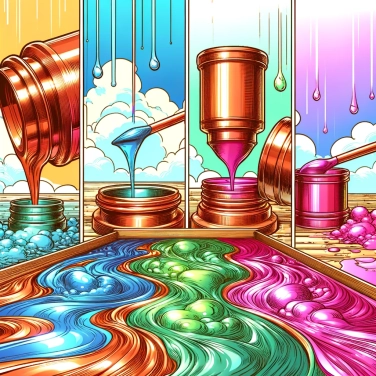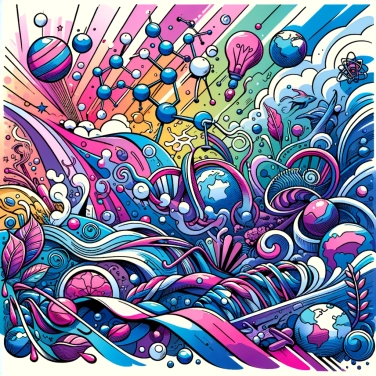Copper changes color over time due to oxidation. When copper reacts with the oxygen in the air and moisture, a layer of copper oxide forms on the surface, giving the metal its characteristic green or blue hue called patina.

Copper is a metal that, when left exposed to ambient air, gradually begins to change color. Why? Because it naturally reacts with the oxygen present around it. This chemical reaction causes the formation of a thin dark layer called copper oxide. This dark film is the first visible sign of a long progressive process. At first, the copper surface shines beautifully in warm, reddish hues, but gradually it dulls, changing from a dark brown shade to various characteristic green-blue tones. This change occurs slowly and quietly, often without being truly noticed each day. It is the famous patina observed on old statues, historical monuments, or the ancient roofs of buildings.
Copper reacts gently with the oxygen present around it. Over time, this reaction creates a layer called patina, which gradually appears on the surface of the metal. This patina, often a verdigris color, acts as a protective shield and prevents the copper underneath from deteriorating further. It's a bit like the copper is naturally forming an impermeable shell against moisture and external aggressions. That's why we often see old roofs, statues, or monuments made of copper taking on that typical green or bluish hue.
The climate, frankly, has a significant impact on the color of copper. In the presence of marine air loaded with salt, copper quickly acquires a marked green hue, somewhat reminiscent of "an old statue by the sea." In urban environments, pollution with sulfur compounds gives copper a darker, brown-black tint. In a humid climate, it is the humidity itself that accelerates the appearance of the famous patina, this greenish protective layer. Conversely, in dry regions, the transformation of copper is much slower, retaining its initial orange shine for a longer time. In short, it's mainly a story of ambient air, humidity, and the substances to which the material is exposed.
In contact with humid air and various pollutants, copper reacts to form several chemical compounds responsible for its changes in appearance. The main contributor to the brown-black hue is copper(I) oxide, formed at the very beginning of oxidation in the presence of air. Then, this shade evolves into a typical green due to the formation of the famous patina, primarily composed of copper carbonate and sometimes copper sulfate or chloride, depending on the active substances present in the surroundings. When the environment is rich in sulfur dioxide, blue-green hues appear due to basic copper sulfate. If the ambient air is high in chlorides (near the sea, for example), the color shifts to a brighter green or bluish due to basic copper chloride. In short, each hue comes from a specific chemical recipe, directly influenced by the environment around the copper.
In Ancient Egypt, copper was used not only for practical purposes but also for therapeutic ones. It was believed to have antibacterial properties, and it was used to purify water and accelerate the healing of wounds.
Copper does not only change color due to oxygen: other elements like sulfur, present in acid rain or industrial pollution, can give it a bluish or blackish tint.
The green patina that covers ancient copper, known as verdigris, was once used by painters as a natural pigment due to its exceptional turquoise color, particularly in the creation of Renaissance paintings.
In contemporary architecture, some architects intentionally use copper for its changing hues, so that buildings visually evolve over time and harmoniously integrate into their environment.
To effectively clean a copper item, mix a natural solution of lemon juice and salt or baking soda to efficiently remove surface oxidation. After cleaning, rinse thoroughly with clear water and immediately dry the item to prevent rapid re-oxidation.
It is very difficult to completely prevent copper from oxidizing when exposed to the outdoors. However, regularly applying a layer of clear protective varnish or a specific treatment for copper can significantly slow down this process.
The typical green patina of copper, primarily composed of copper carbonate and sulfate, is generally not toxic with occasional contact. However, regular or prolonged ingestion of large amounts can pose a health risk. Therefore, it should never be intentionally ingested.
Historically, copper has been chosen in architecture for its durability, ease of shaping, and especially for its natural resistance to corrosion. Many famous historical buildings feature copper roofing covered with a characteristic green patina, demonstrating this excellent longevity.
No, the greenish patina that forms on copper serves a protective role. It limits the direct exposure of the copper to external elements, thereby slowing down corrosion and preserving the integrity of the underlying metal.

66.666666666667% of respondents passed this quiz completely!
Question 1/5